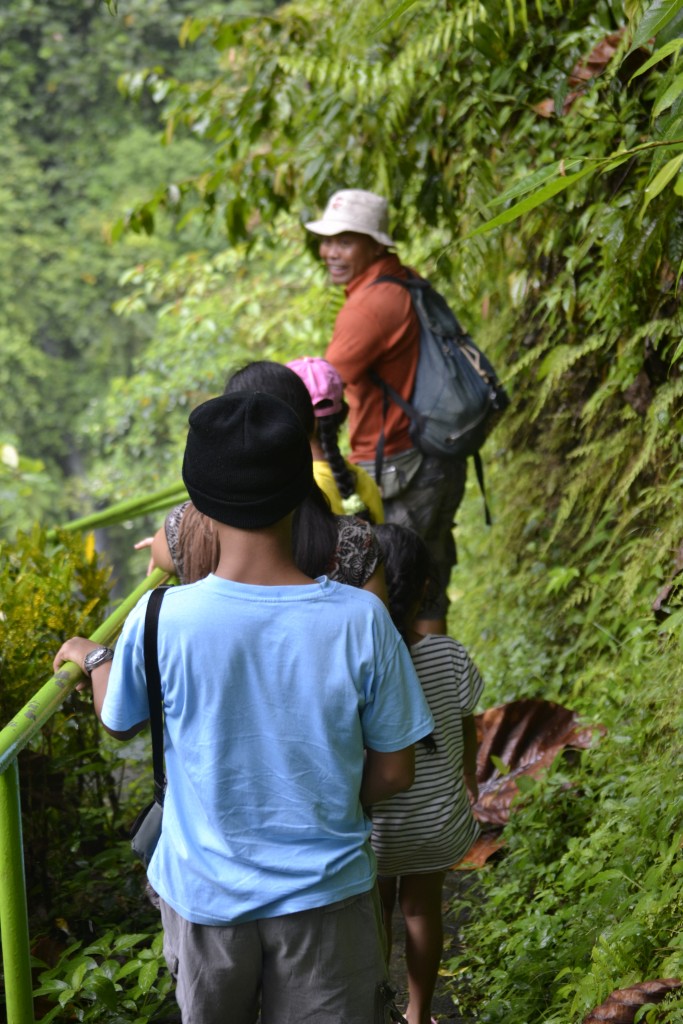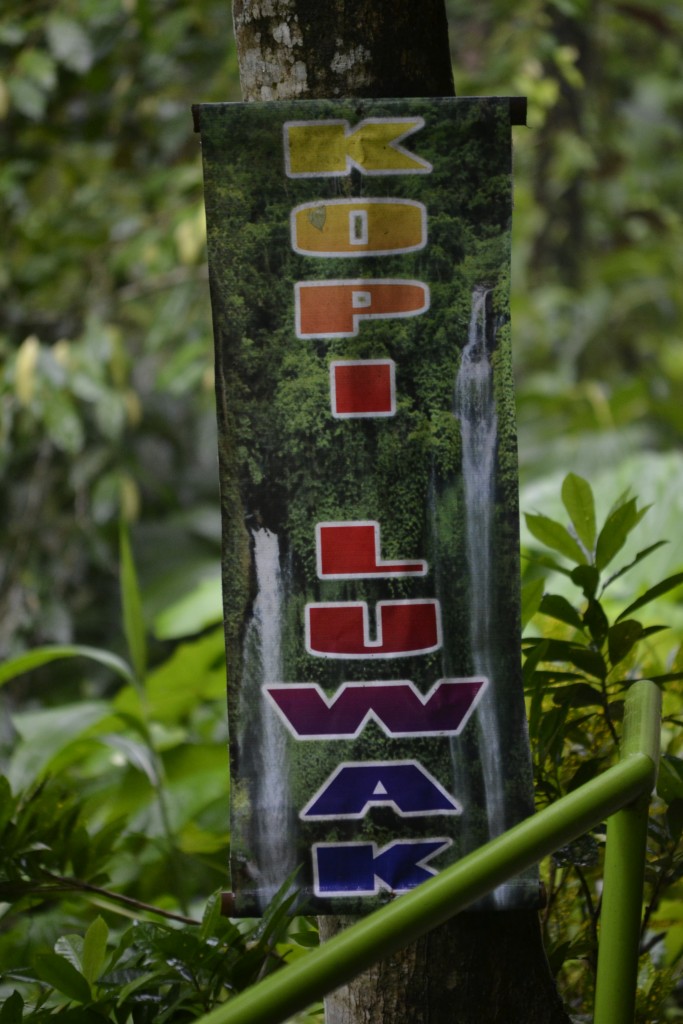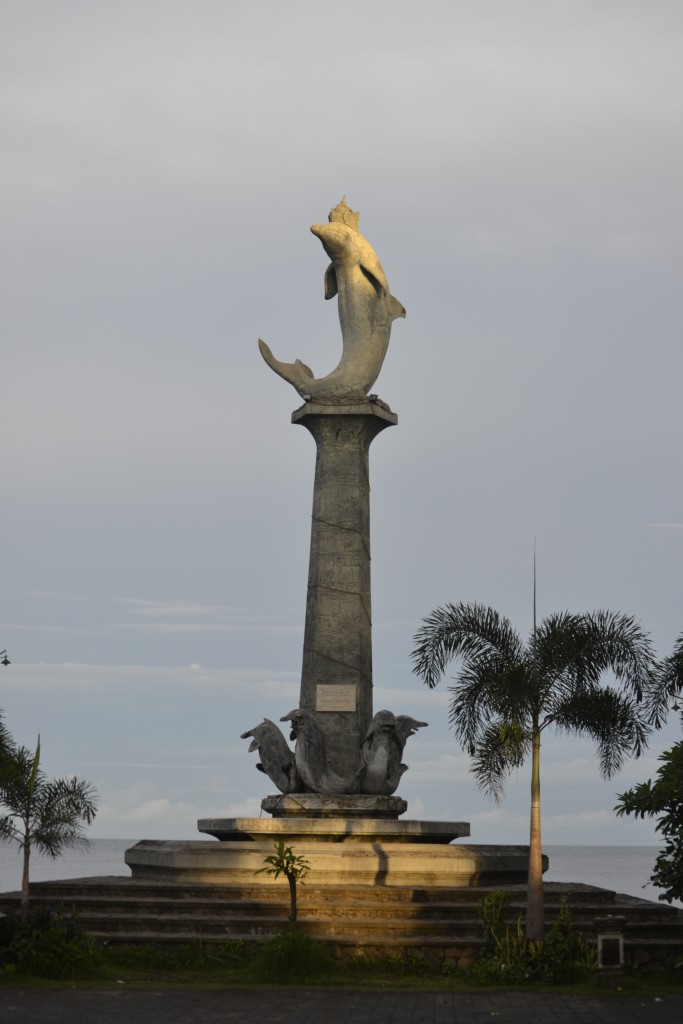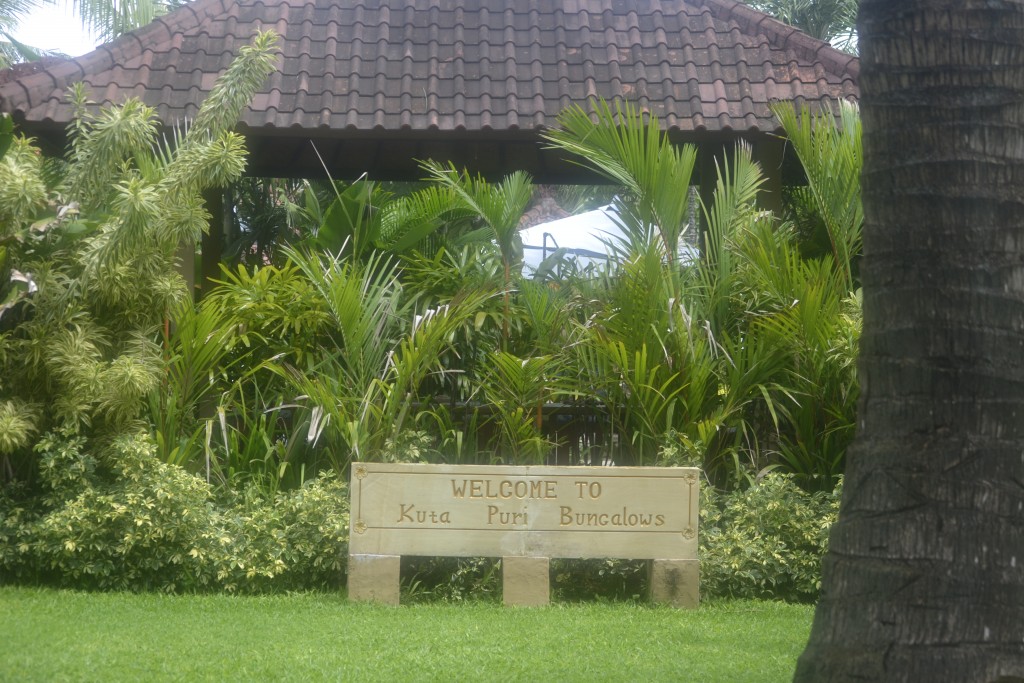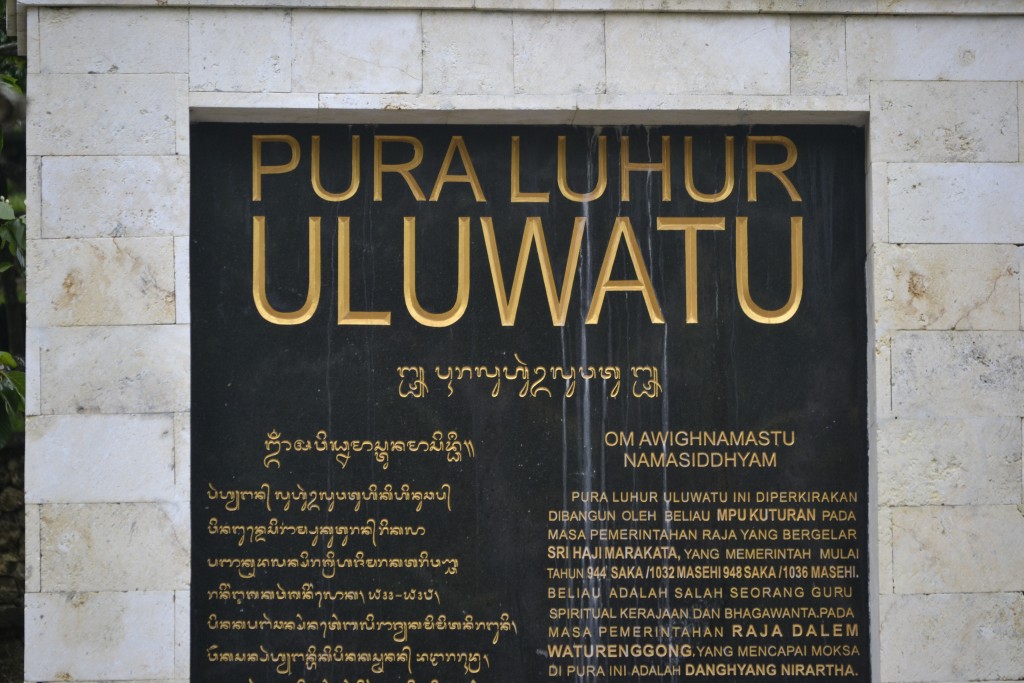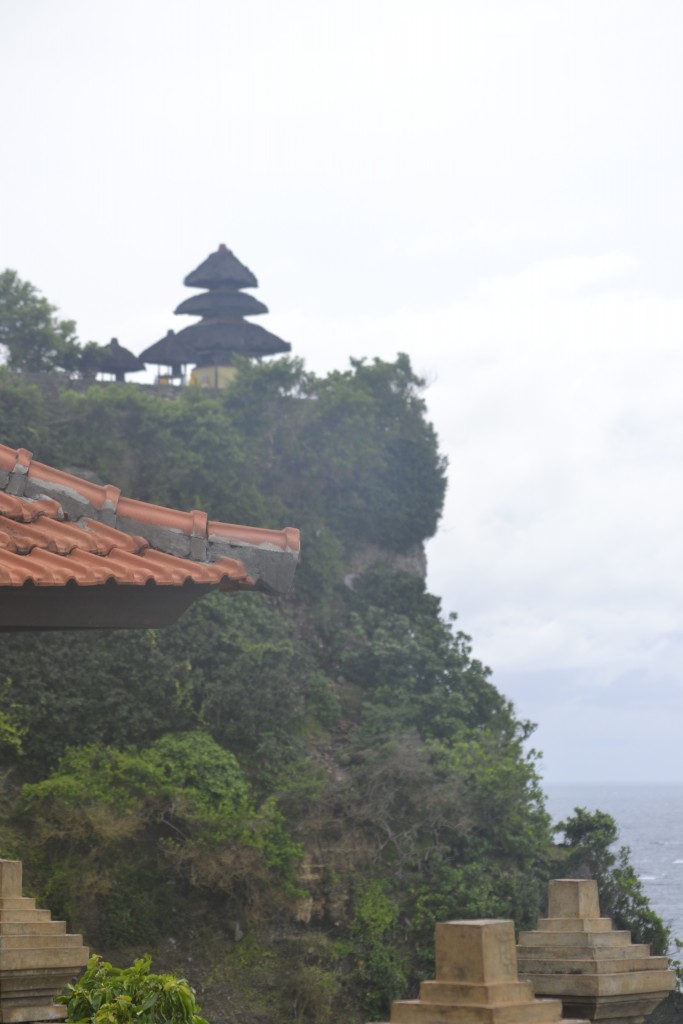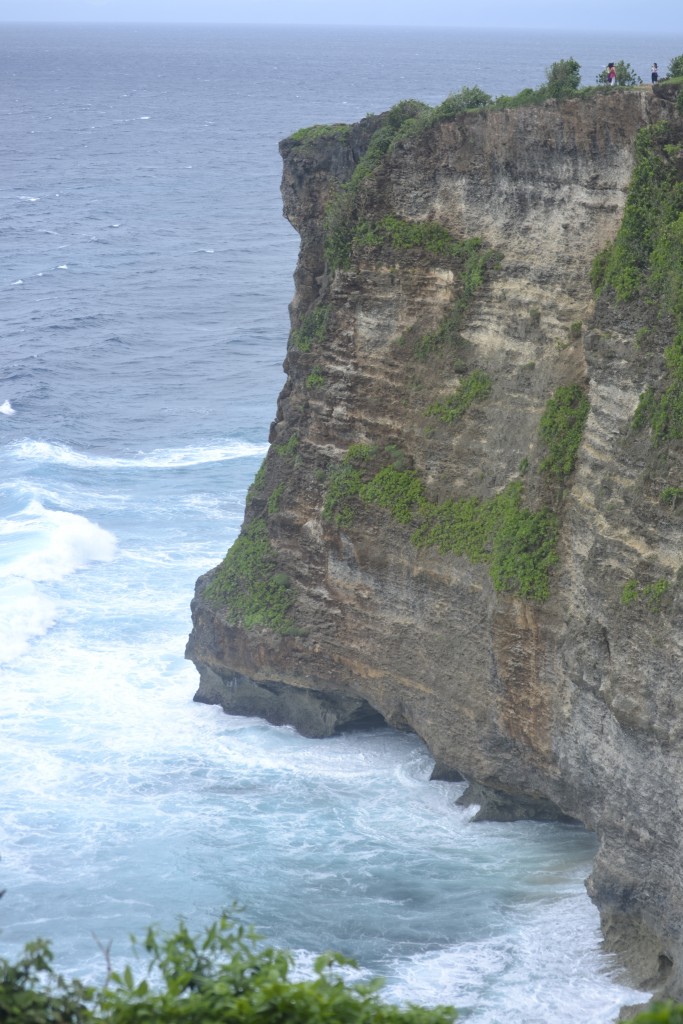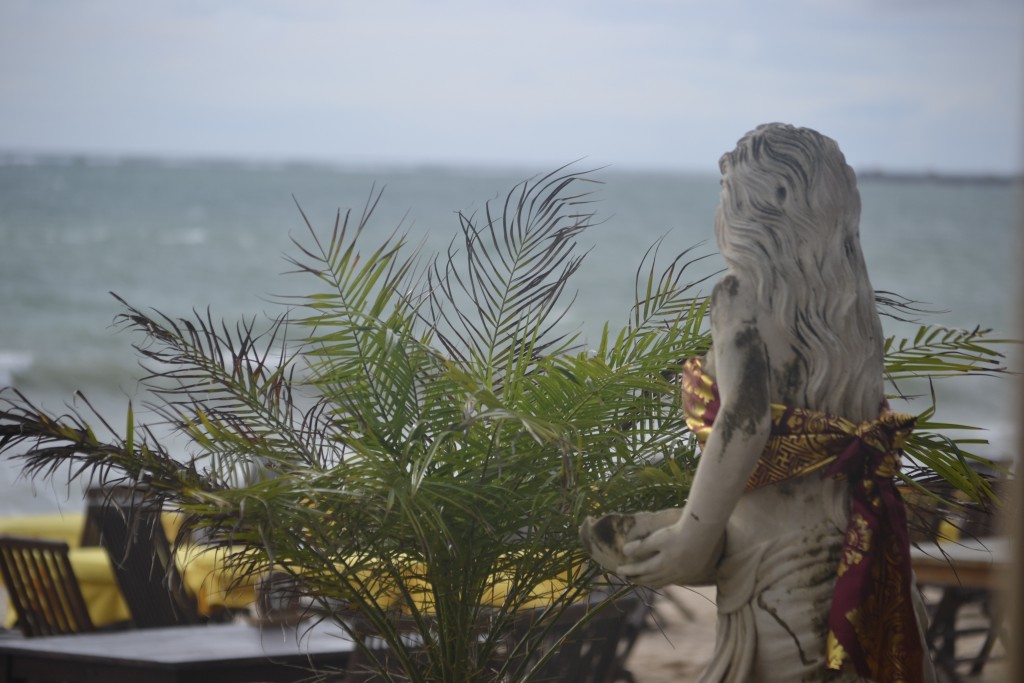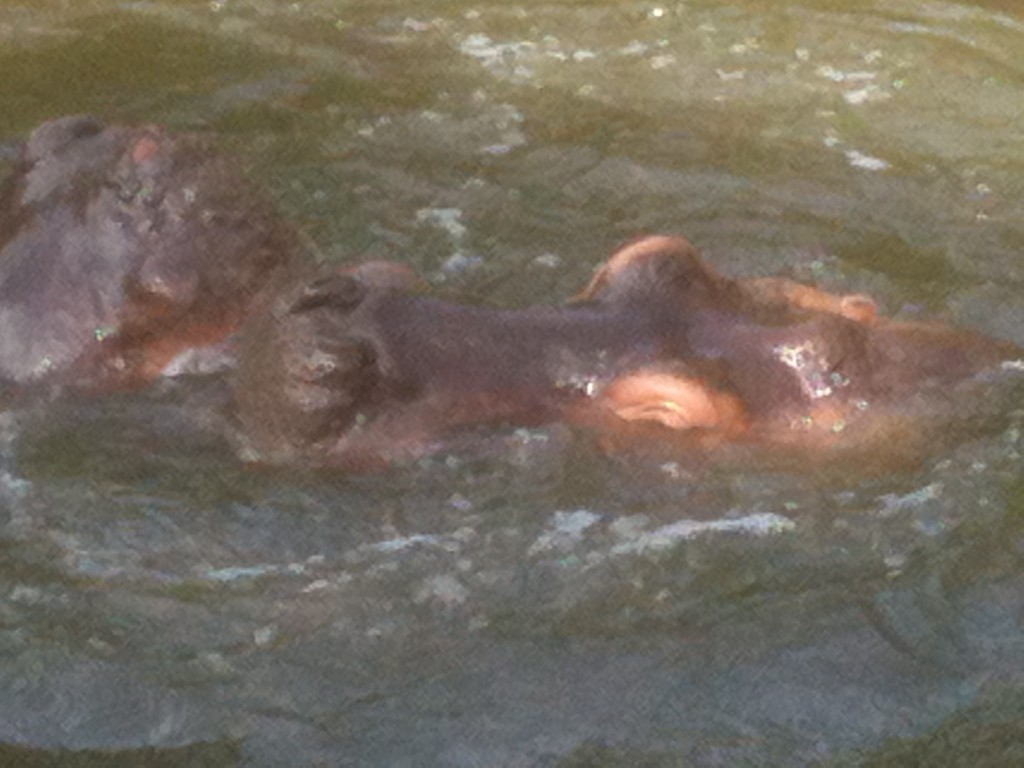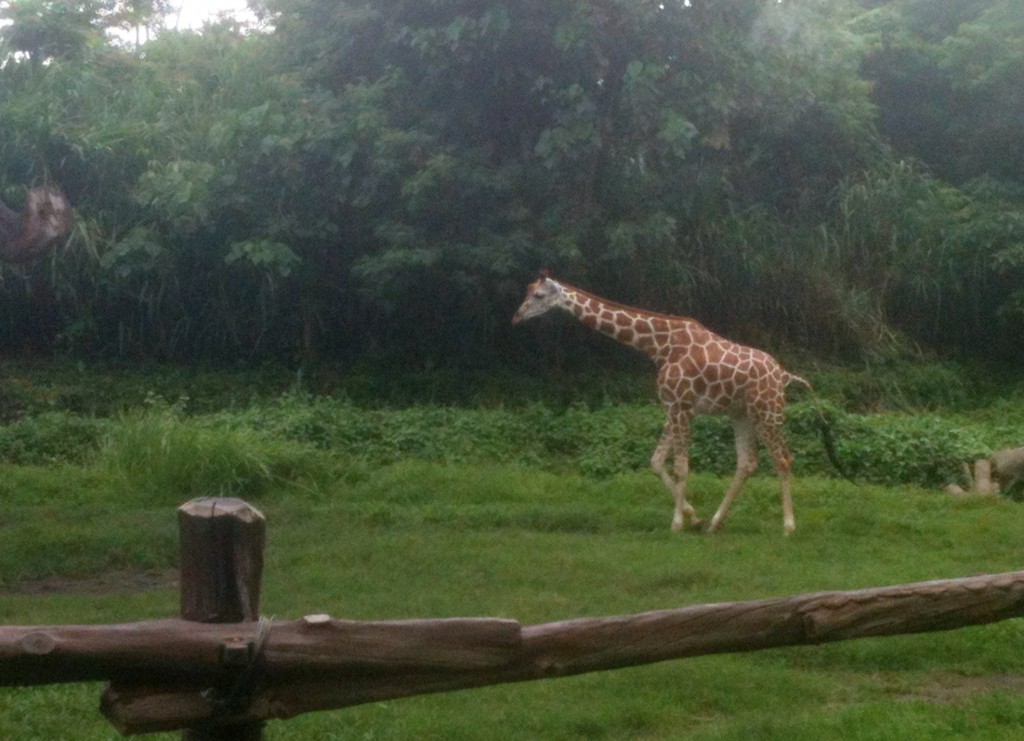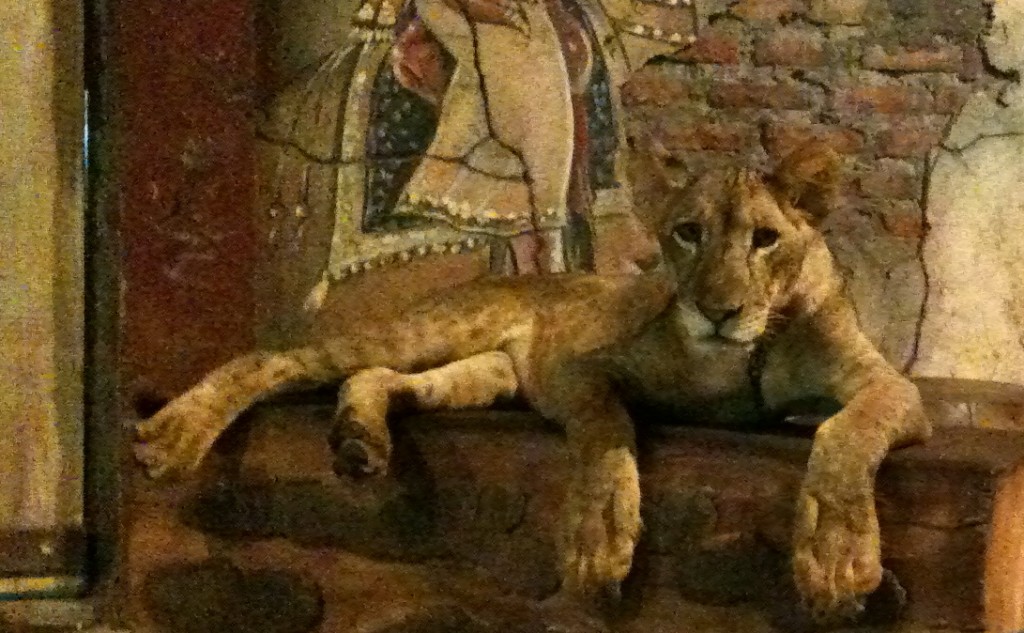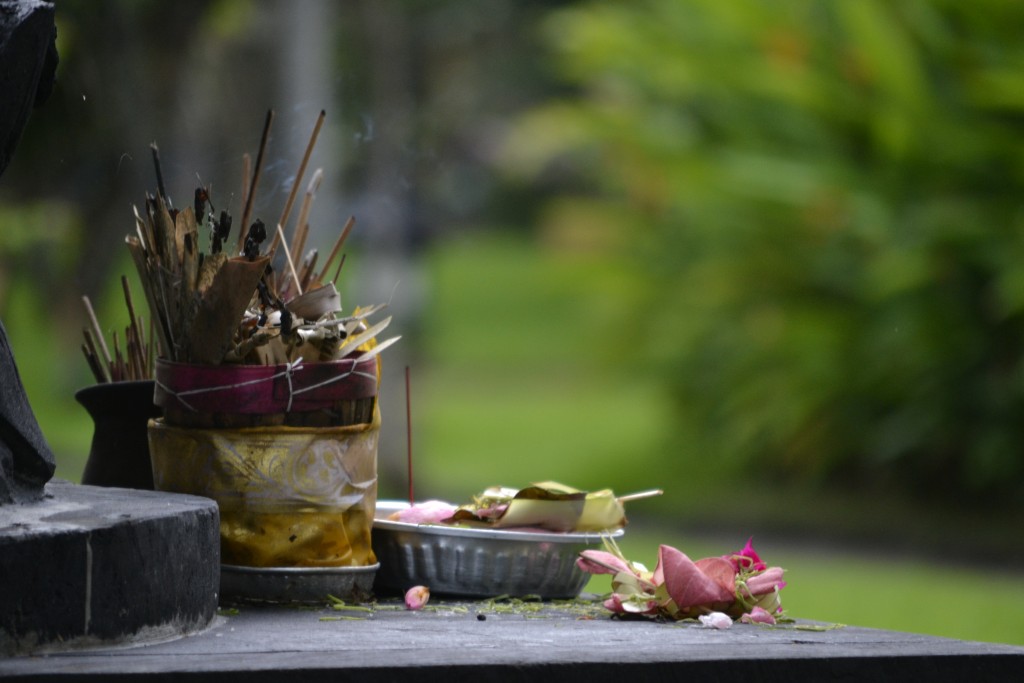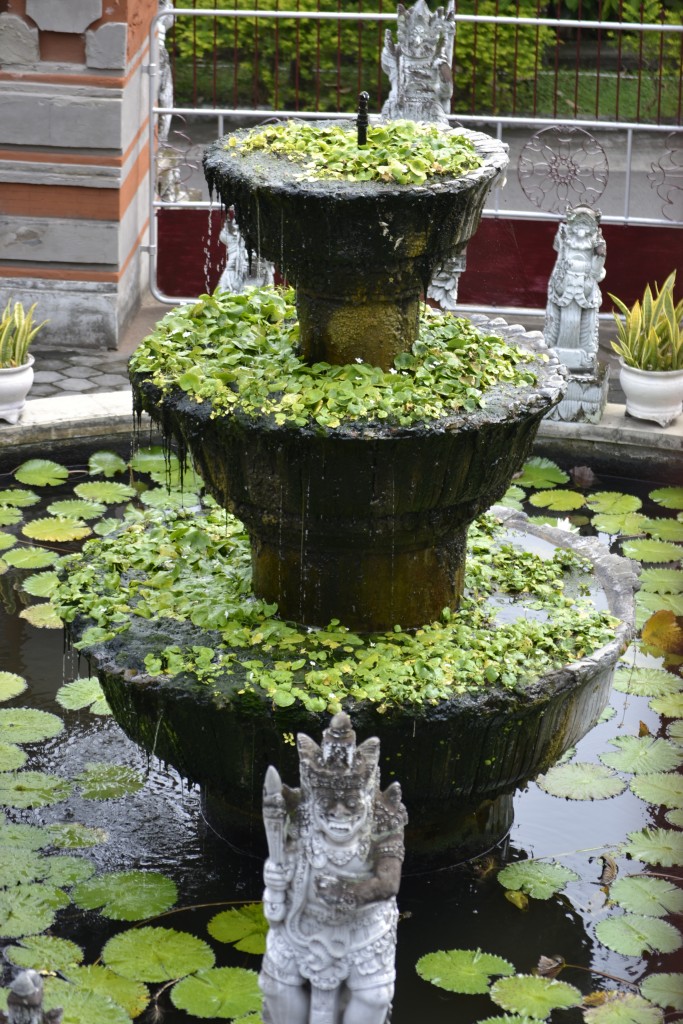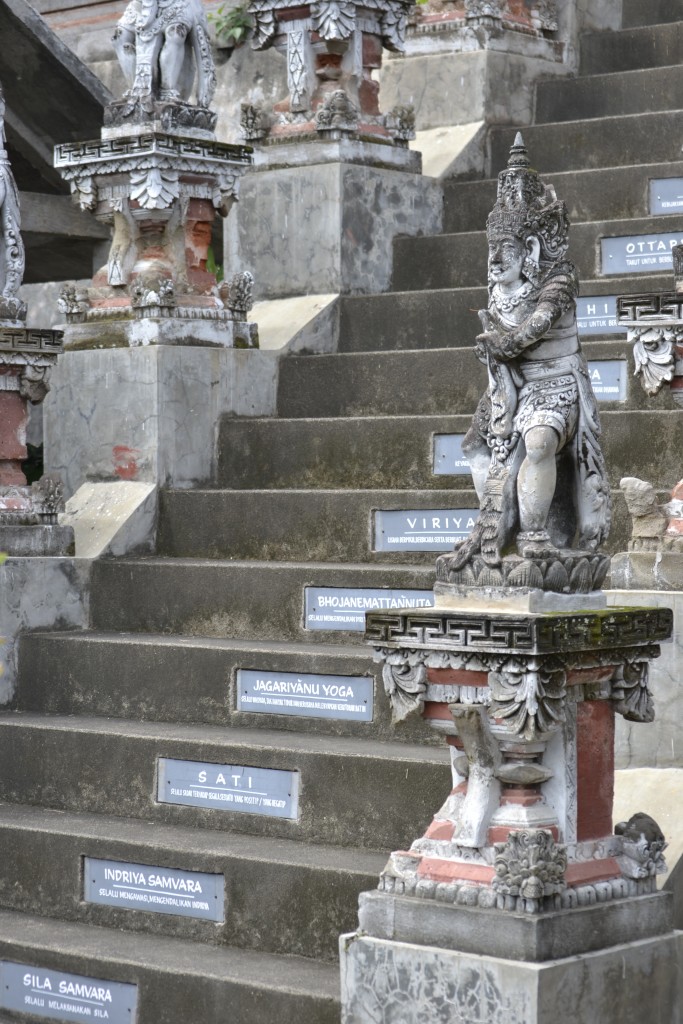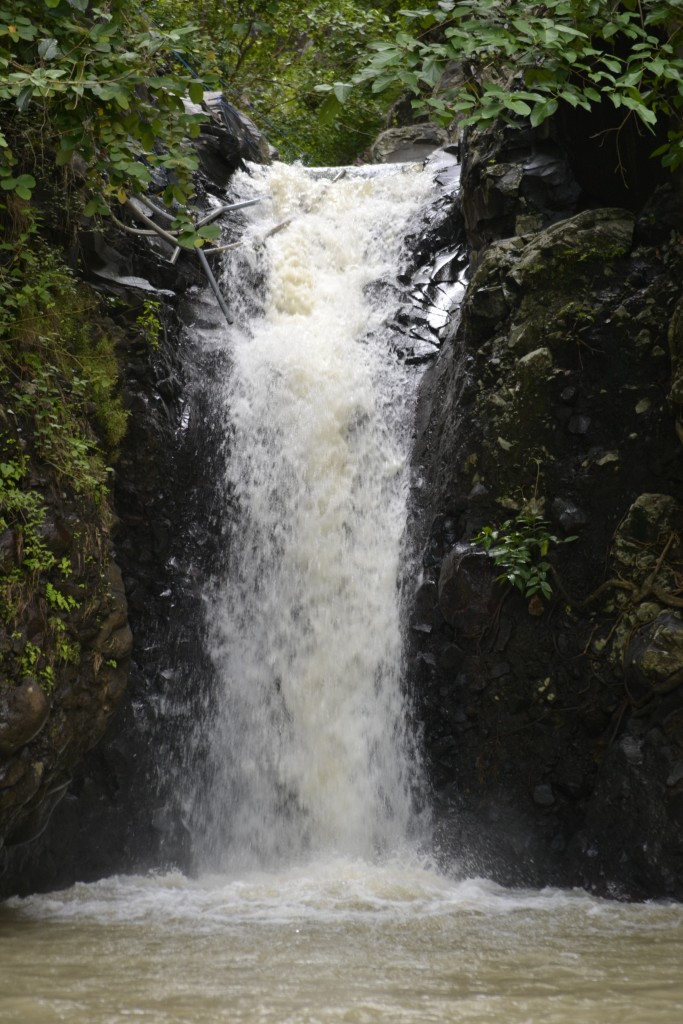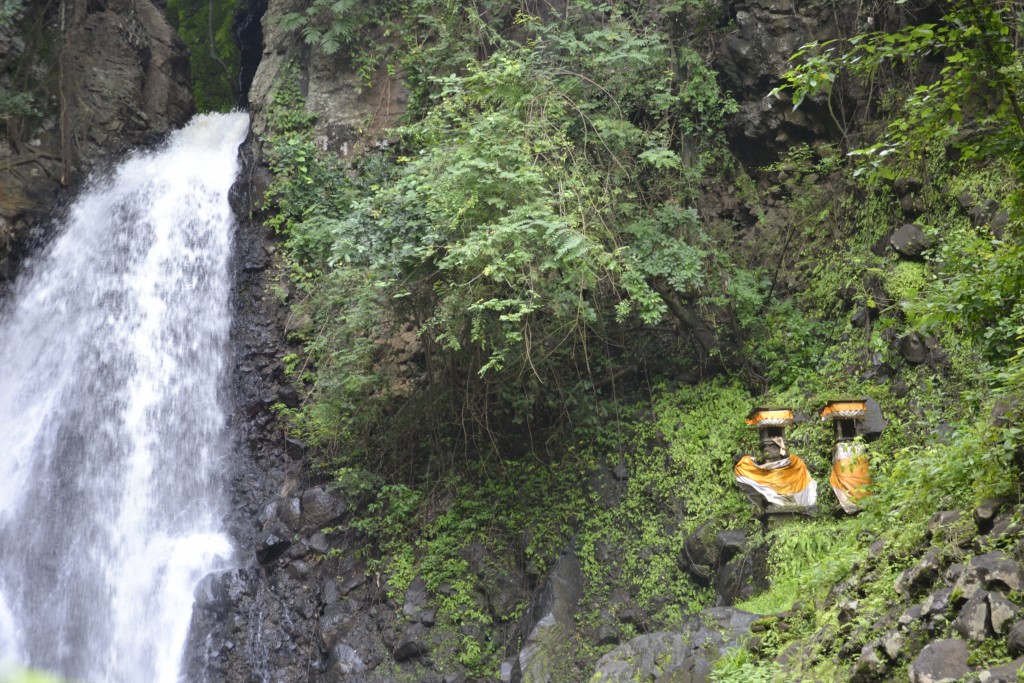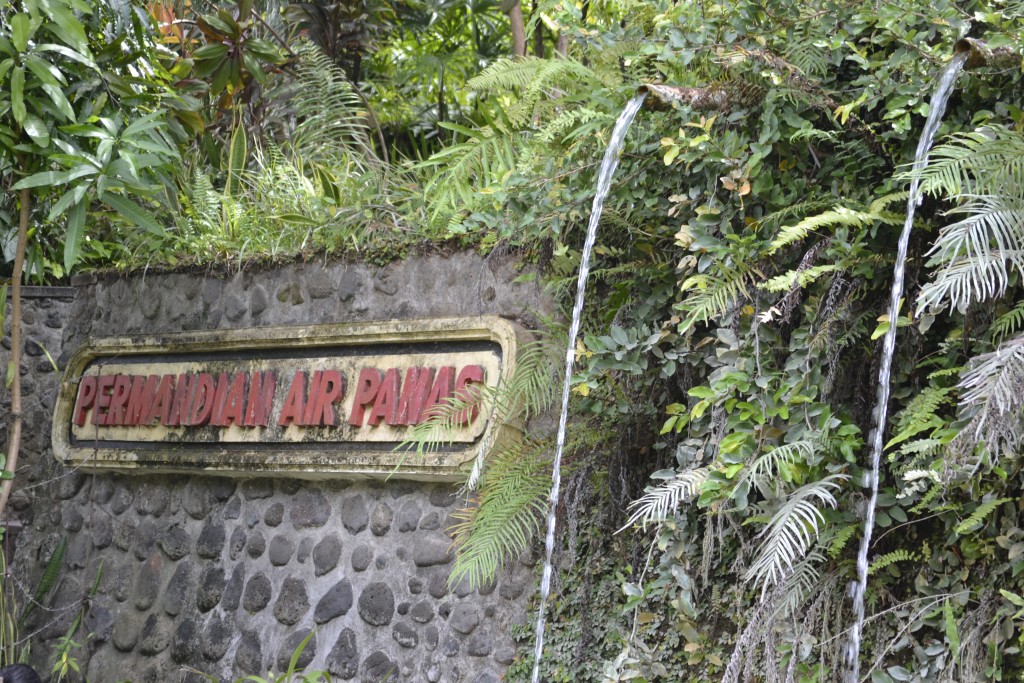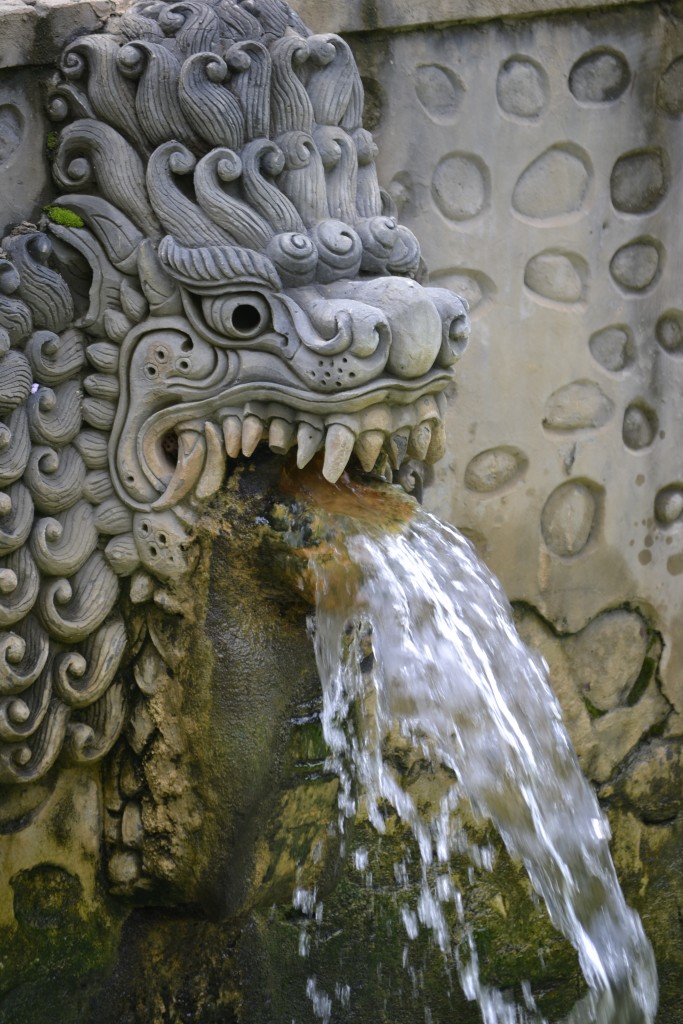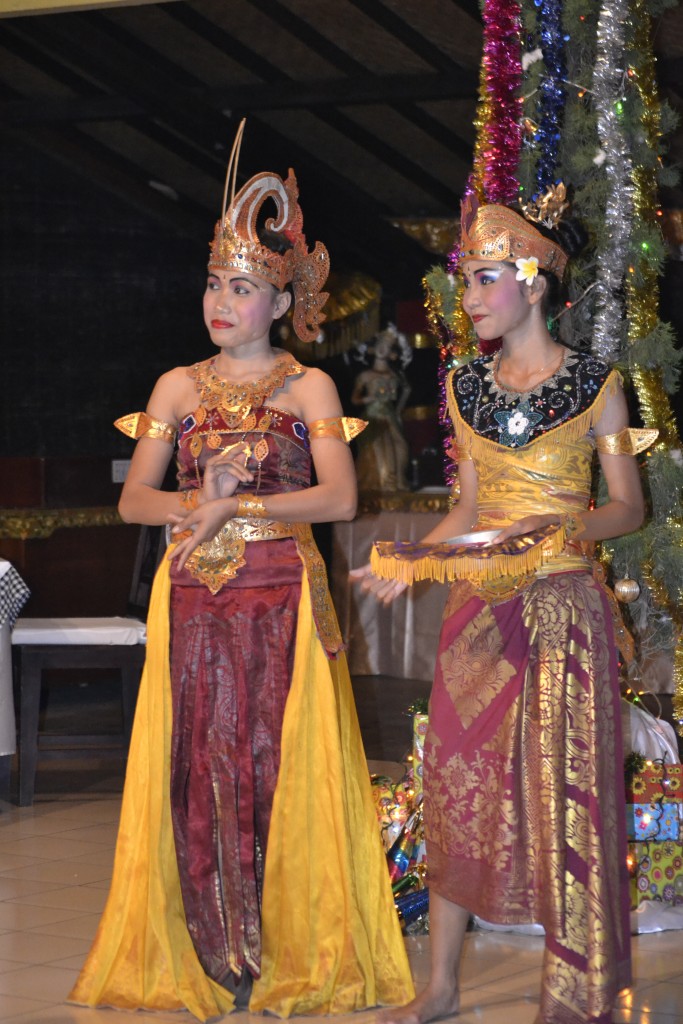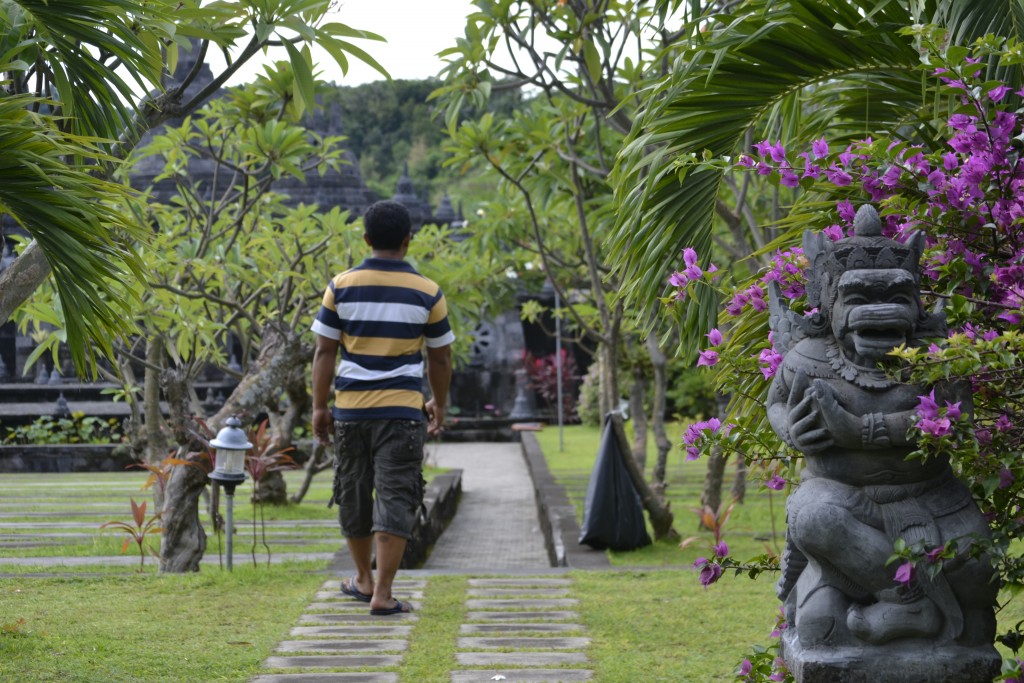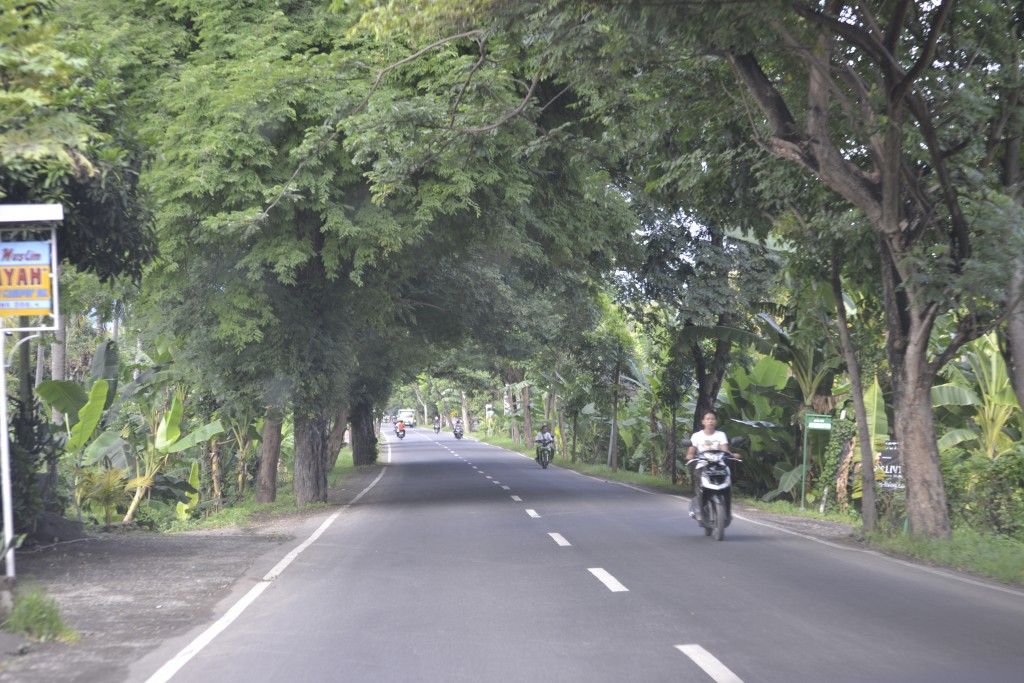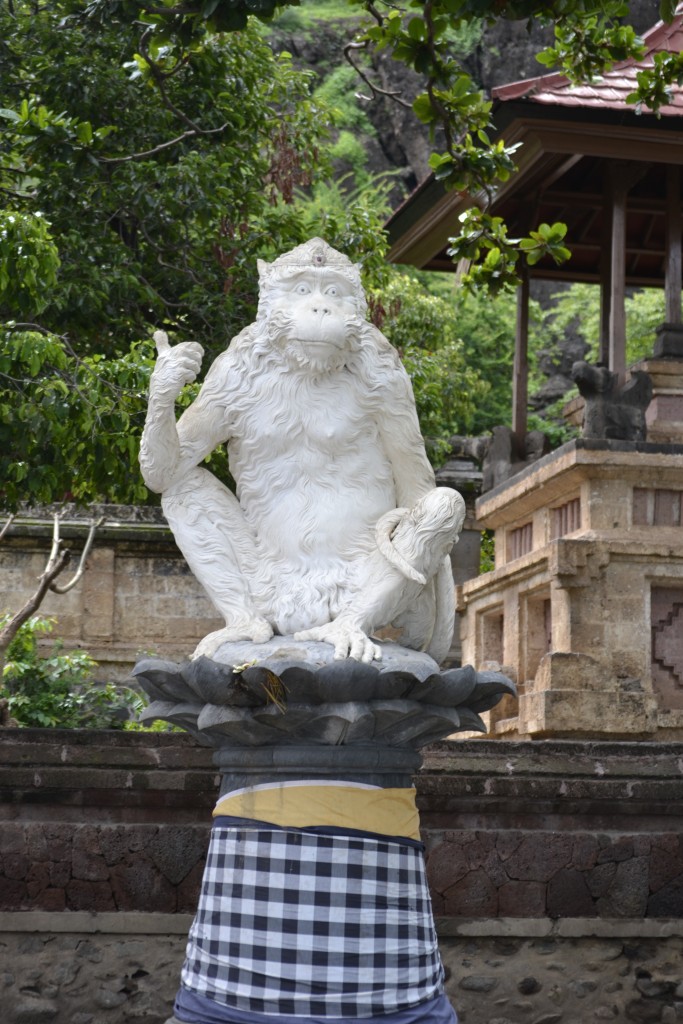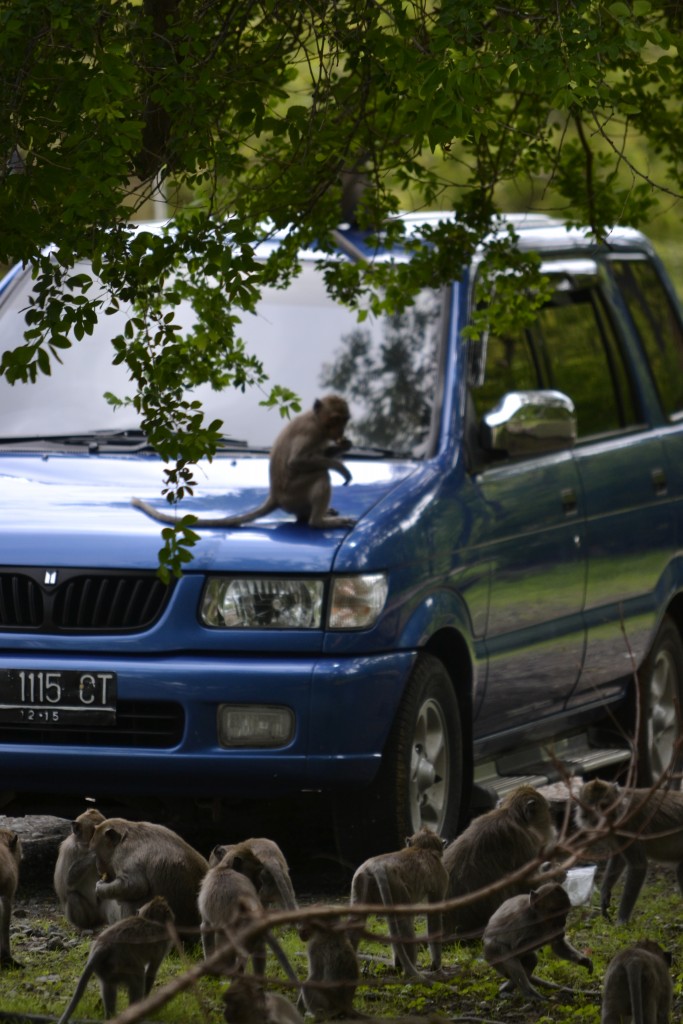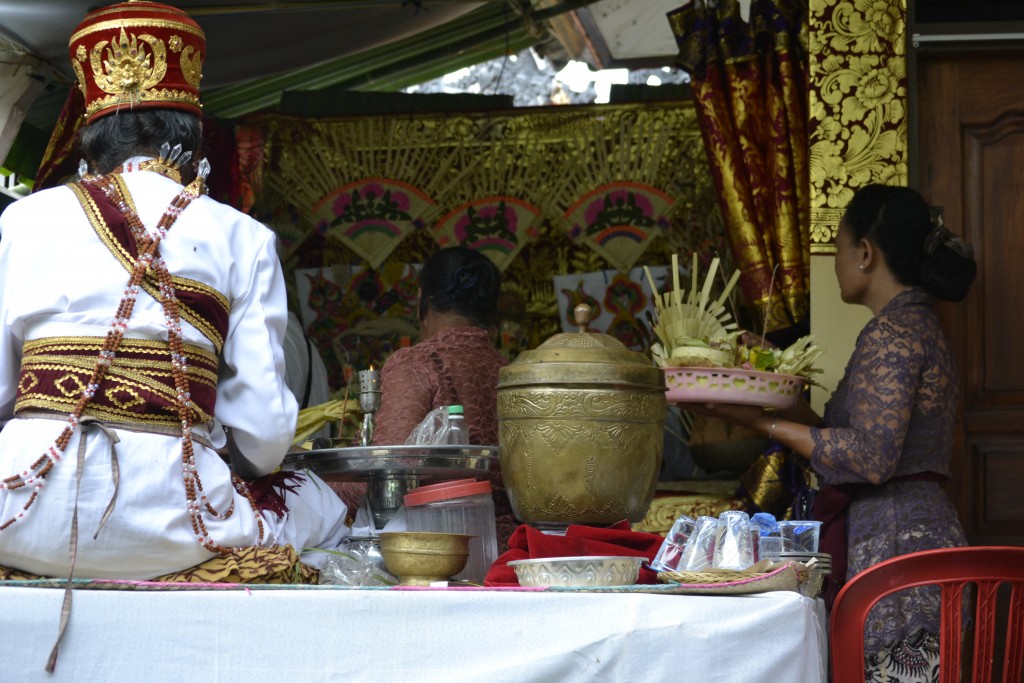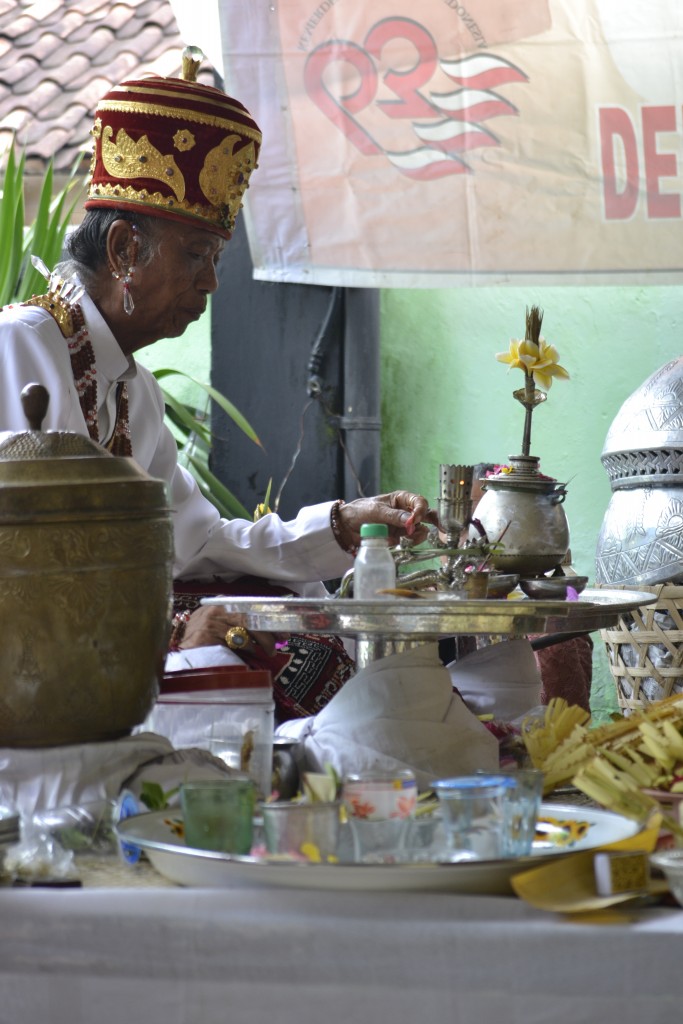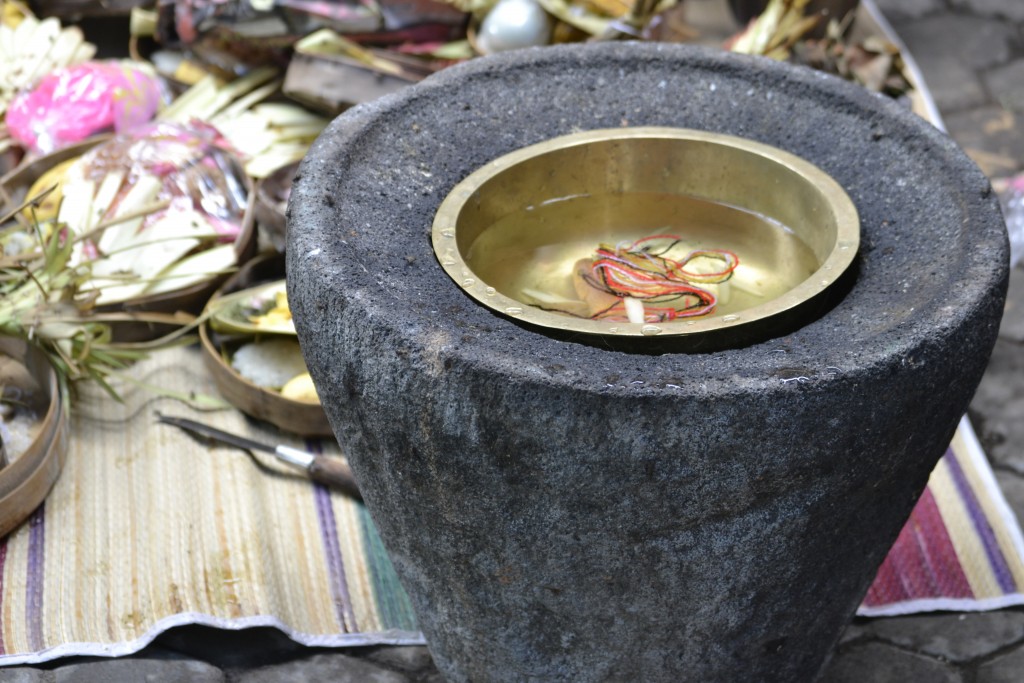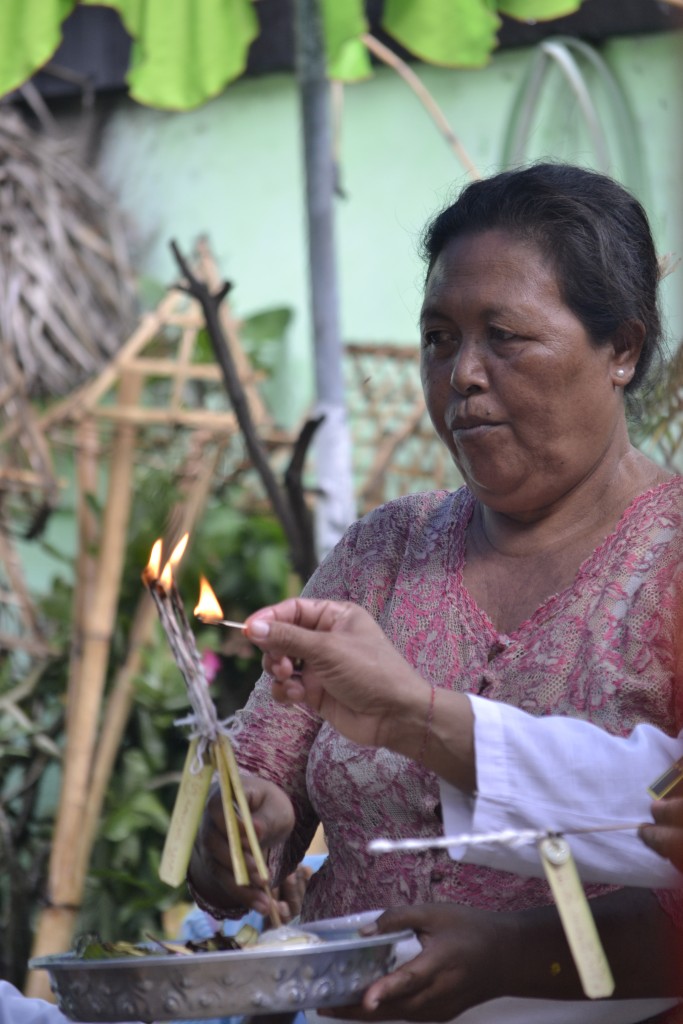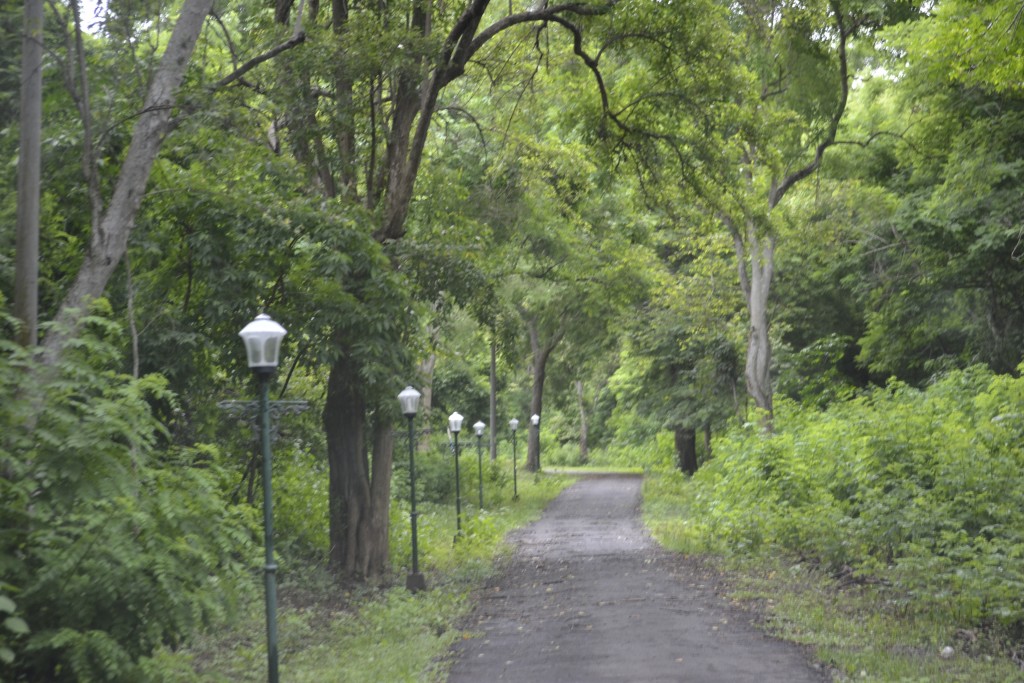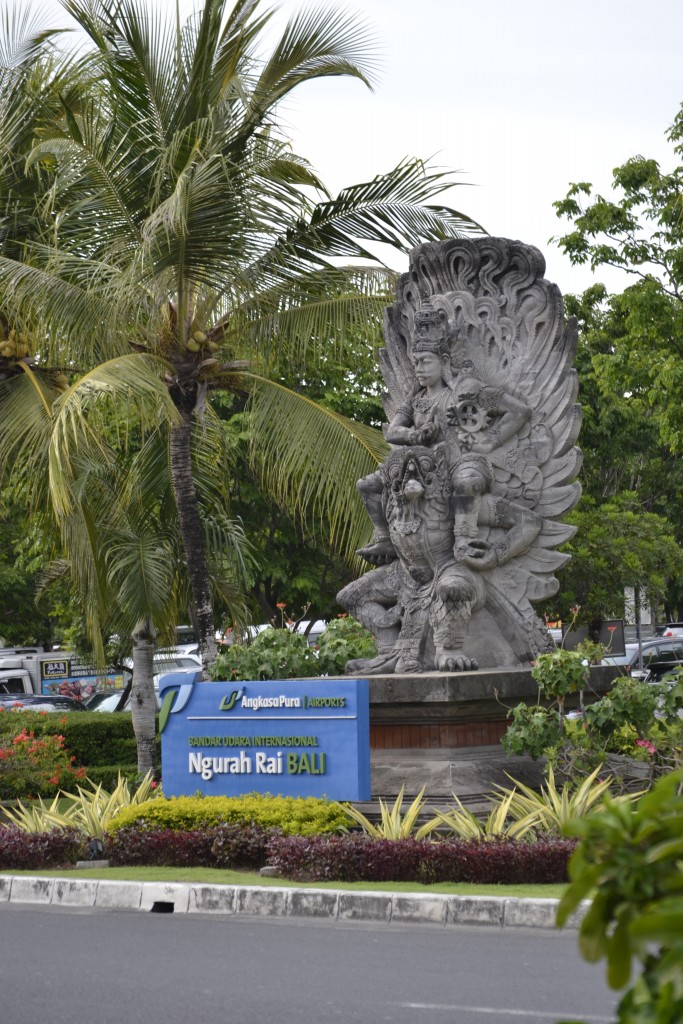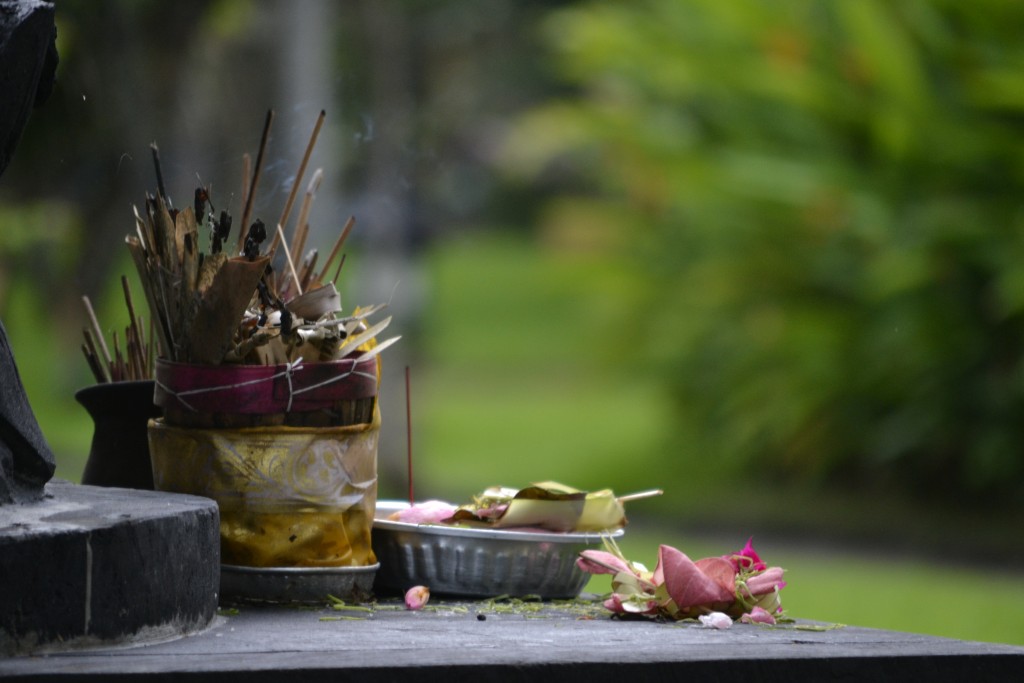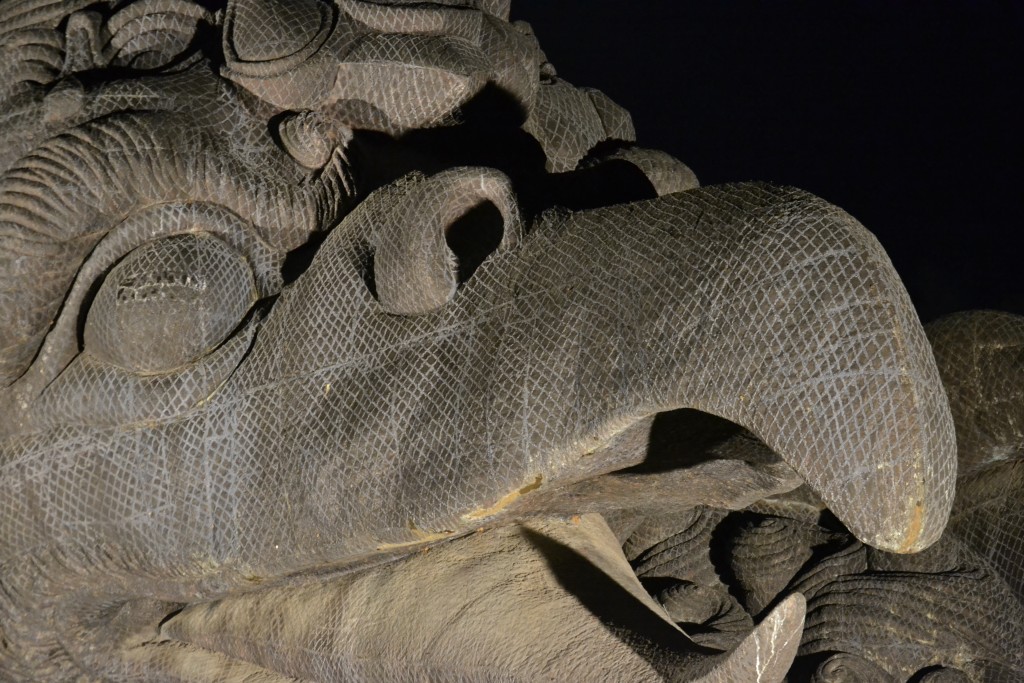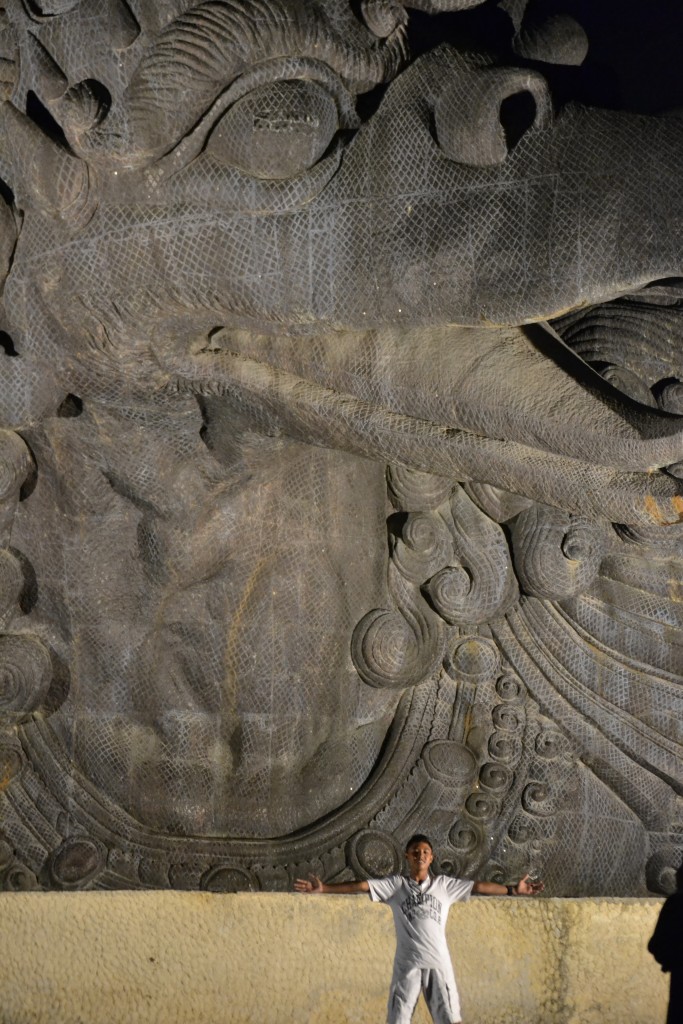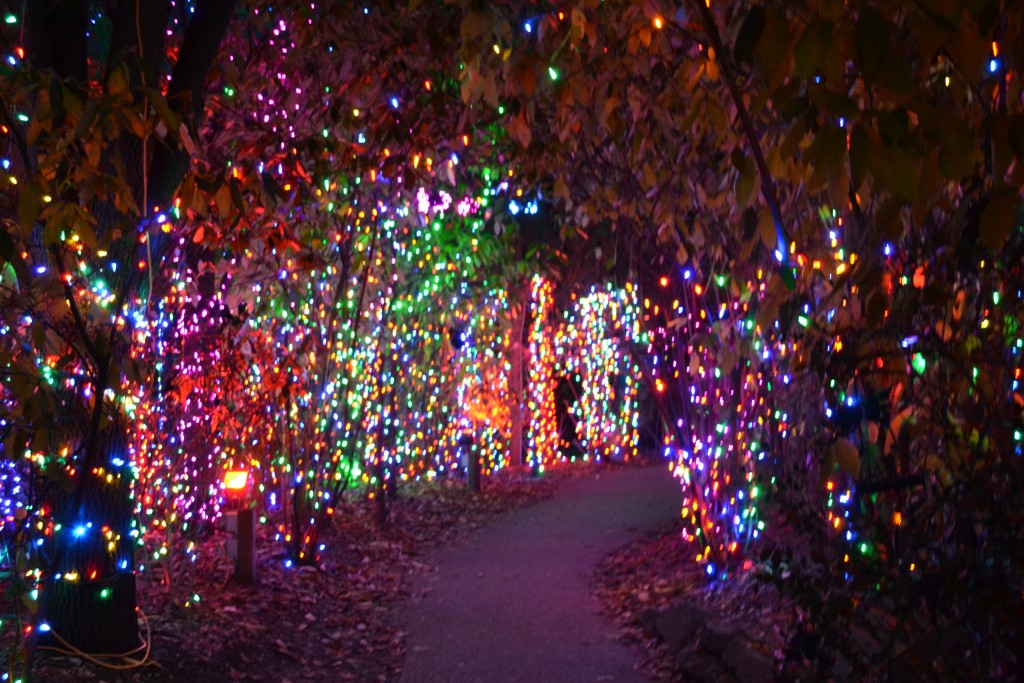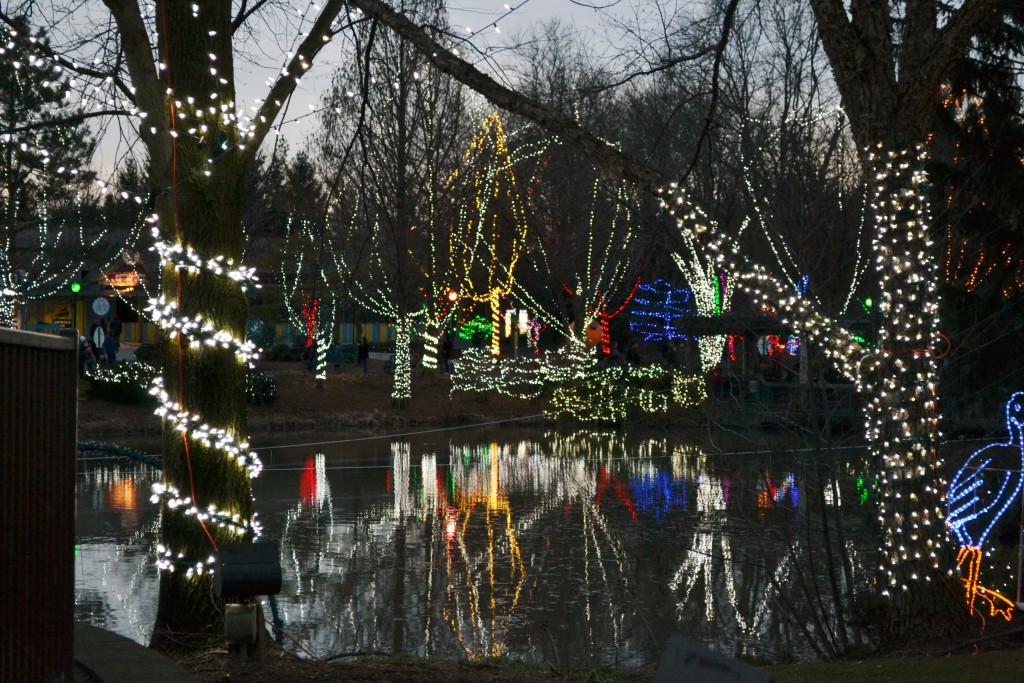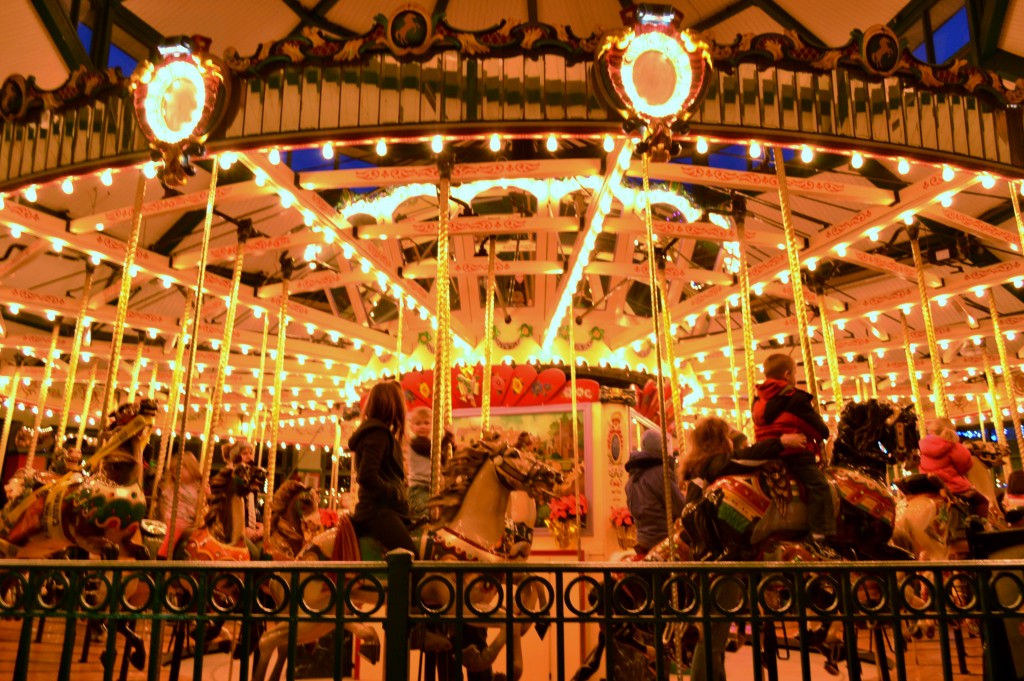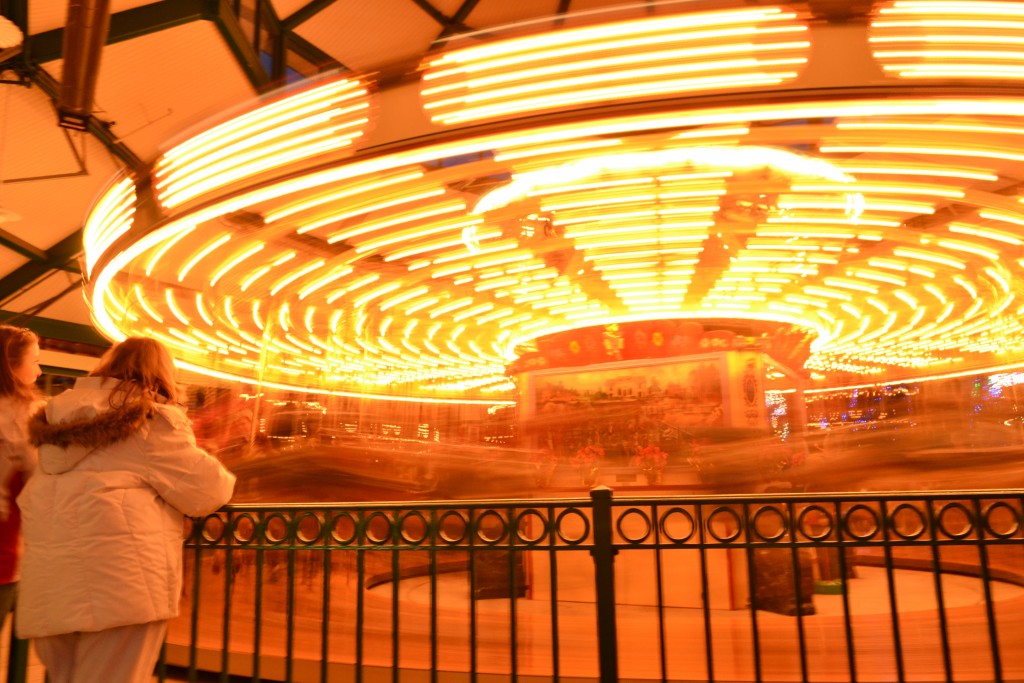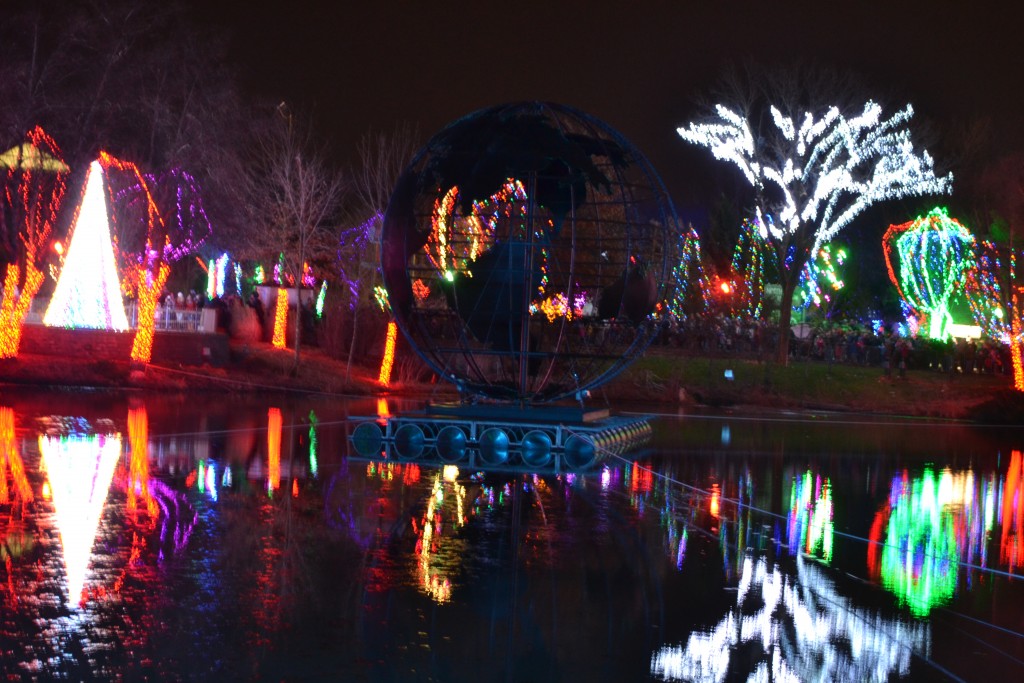Another beautiful day in Bali and I was meeting up with my friend Wayan and his family to hike Sekumpul Waterfalls. The weather was calling for rain showers, so we decided to leave the house early to miss as much of the rain as possible. We entered the park and paid our admission in preparation for the hour-long hike to the base of its falls.
Making our descent down the switchbacks, we noticed the magnificent view of the rice terraces opposite the trail. Situated on the side of the hill, the layered crops grew among the staggered rows of palm trees. Our hike took us further into the depths of the valley as a fog began to blanket our path. Soon we could hear the faint sound of the magnificent waterfalls in the distance.
About halfway into the hike, a small detour led us to a café for a moment of rest and refreshments. Along the path I noticed a sign for Kopi Luwak coffee and I was curious to try Bali’s famous coffee. The island’s exotic coffee is unique in that it requires the assistance of the cute little luwak for processing.
The luwak, also known as the Asian palm civet, is a cute little cat-like animal from Indonesia that loves to eat coffee beans. The food passes through its digestive system and the partially digested remains are collected to complete the coffee making process. According to the Balinese, the combination of fermentation and chemicals from the luwak’s digestion is what gives the coffee its unique flavor. It is the most expensive coffee in the world where in the United States one can expect to pay $100 to $600 per pound. A cup of the Kopi Luwak was only $5 US at this cute little cafe.
Piping hot, I sipped on the Kopi Luwak with a little cream and sugar. I really liked the smooth taste and enjoyed that it was prepared perfectly and not at all bitter. After our coffee break, we gathered our belongings and continued our trek down the steep slope. The path led to the river below which we needed to cross over to reach the bottom of the falls. With the water reaching up to our knees, we carefully managed to find our foothold on the slippery rocks and made our way to the other side.
The sound of the falls grew louder and soon we could see the water crashing down upon the rocks. The children giggled as the thick mist tickled their faces and drenched their clothes. There was a small pool where we took a moment to swim beneath the falls and enjoyed the roaring sound of the water tumbling down the cliffs.
Already wet, a torrential rain moved in, taking us by surprise. We needed to begin making the journey back to our car before the water began to rise. Giving one last look towards the waterfall, we were overwhelmed by the surreal view in which the falls seemed to appear out of nowhere. This moment was worth every challenging step of our hike.
The rain did not let up and there was some flooding on the streets as we drove back to the hotel. Saying goodbye to Wayan and his family, I checked into the Lovina Water Garden Hotel and waited out the storm before taking a stroll around the property. I moved hotels to be closer to the little town of Lovina Beach with its row of restaurants and shops. It remained overcast but it was a beautiful part of Bali that was not crowded and overrun with tourists.
I took an afternoon walk to the beach, watching the locals pass by on their mopeds, sometimes three or four on one bike. Vendors were selling beautiful coral necklaces and children were playing in the streets.
I arrived at the beach where I noticed a tall, worn monument where people were congregating on its steps. The column in the center displayed a large dolphin at the top while there were four dolphins that surrounded the base of the pedestal. Lovina Beach is known for its large pods of dolphins and cruises transport passengers in the early morning and evenings to watch them frolicking around the sea.
Taking a closer look at the sculpture, it seemed as though the salt air had taken its toll on these figures. I wondered how long these dolphins had been standing here gazing out into the ocean. I thought about all of the people that had passed by the beach or sat at the base of its pedestal.
I thoroughly enjoyed the laid-back, charming beach town of Lovina and preferred it to the late-night crowds of Kuta. I wished I could have spent more time in this area, but tomorrow we will be leaving for Kuta for a couple of days before flying back to the states. What I love most about the north end of Bali is the solitude and natural beauty that inspires me to explore the world less traveled.
Has there been a country that has inspired you to veer off the beaten path? One that has led you to explore parts of the country that you might have otherwise missed? I would love to hear about it! Let me know by leaving your experience in the comments section below. Many thanks for reading about my Bali adventure! Happy Travels!
What to See and What to Do:
Sekumpul Waterfalls
Tejakula, Lemukih, Sawan, Sudaji
Kabupaten, Buleleng, Bali, 81171 Indonesia
- Admission Fee: 20,000 Indonesian Rupiah (IDR)
- Potential Transportation Costs: There may be an additional cost to travel from southern Bali to the north. Drivers are a great investment and most of them also know the area so well that they double as guides.
- Hours: Daily, open 24 hours
- Amenities: Food and Drink Stalls, Gazebo, Trekking Guide
- Scenic View: Gorgeous views of the waterfalls while taking the path to the base of the falls. Meet the lewak on the property!
- Length of the Tour: Minimum of 1.5 hours, depending on how much time you want to spend at the base of the falls
- Tips for Your Visit: Wear comfortable shoes and if you plan on exploring the base of the waterfall, water shoes are also recommended. The trek can be slippery, so be aware of the conditions of the trail. My driver took me to the entrance and was my guide for the hike and I paid the nominal fee. I also learned that there is another trailhead which starts across from the Lemukh Village registration sign for those that do not want to pay the approximate $1.50 fee.
Where to Stay:
Nirwana Water Garden Hotel
Jalan Binaria, Anturan, Kec. Buleleng
Kabupaten Buleleng, Bali 81152 Indonesia
Where to Eat:
Seyu Japanese Restaurant
Jalan Binaria, Anturan, Kec. Buleleng
Kabupaten Buleleng, Bali 81152 Indonesia
Telephone: +62 362 41050
The restaurant is located in Jalan Binaria (Dolphin Statue Road) only a half a minute walk from the Dolphin Statue towards Angsoka hotel. Free wifi, they deliver as well as offer free transportation in the Lovina area.
I ordered a Bintang, Bali’s local beer and quite a few pieces of sushi and the spicy tuna roll. The fish was amazingly fresh! For dessert, I ordered the banana split and it tasted just like home.
What to Eat:
- Babi Guling: Suckling pig, which is similar to BBQ pork in the US.
- Bakso Soup: Indonesian soup made with meatballs, noodles, spices, vegetables and broth
- Gado-Gado: A cold salad of vegetables served with a peanut sauce
- Nasi Goreng: Fried noodles with lots of vegetables and a choice of meat, topped with peanuts and an egg.
- Pisang Goreng: Fried Bananas, served with palm sugar, honey, flaked coconut or ice cream
- Sate Ayam: Chicken on a stick usually served with a peanut sauce
- Spring Rolls: Crispy pastry filled with minced meat and mixed vegetables and then fried, usually served with a chili sauce
What to Read:
- Balilicious, by Becky Wicks
- Eat, Pray, Love, by Elizabeth Gilbert
- A House in Bali, by Colin McPhee
- Love and Death in Bali, by Vicky Baum
- Snowing in Bali, by Kathryn Bonella
- Under the Volcano: A story of Bali, by Cameron Forbes
Photo Guide for North Bali:
- Git Git Waterfall
- Mount Batur
- Sekumpal Waterfalls
- Tamblingan Lake
- Twin Lakes Viewpoint
